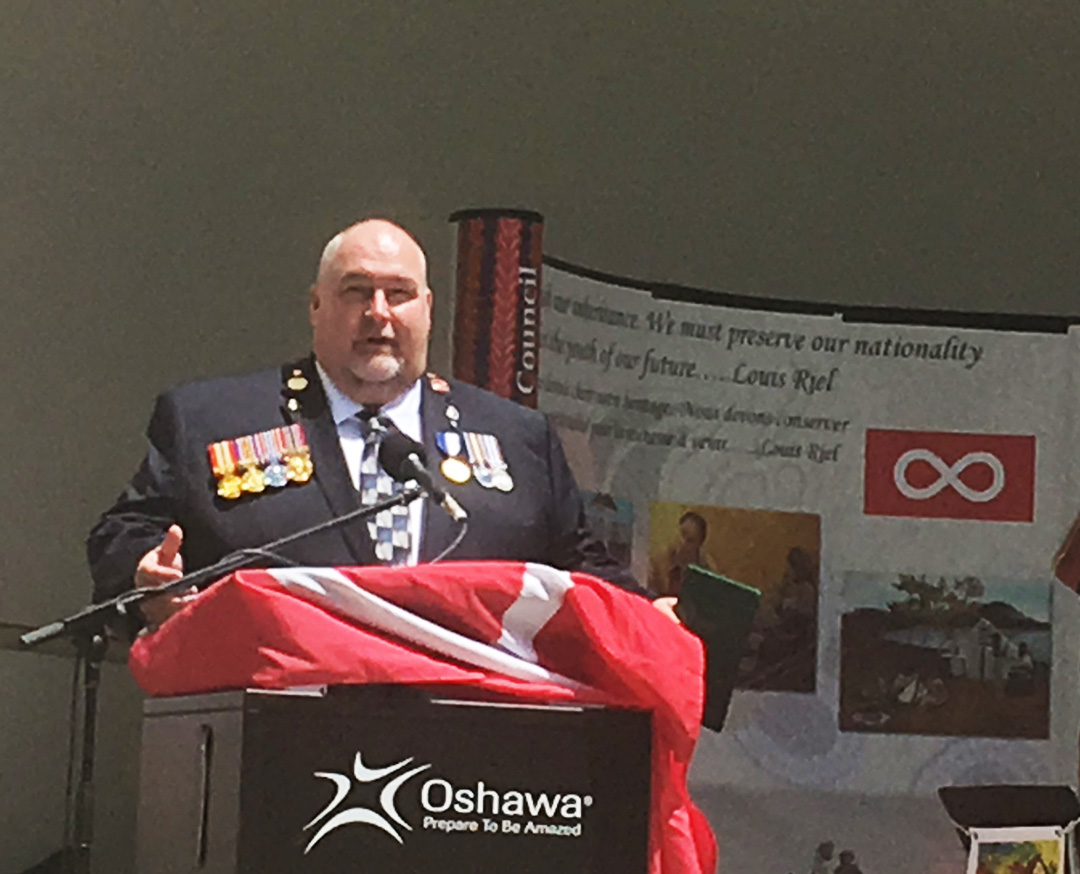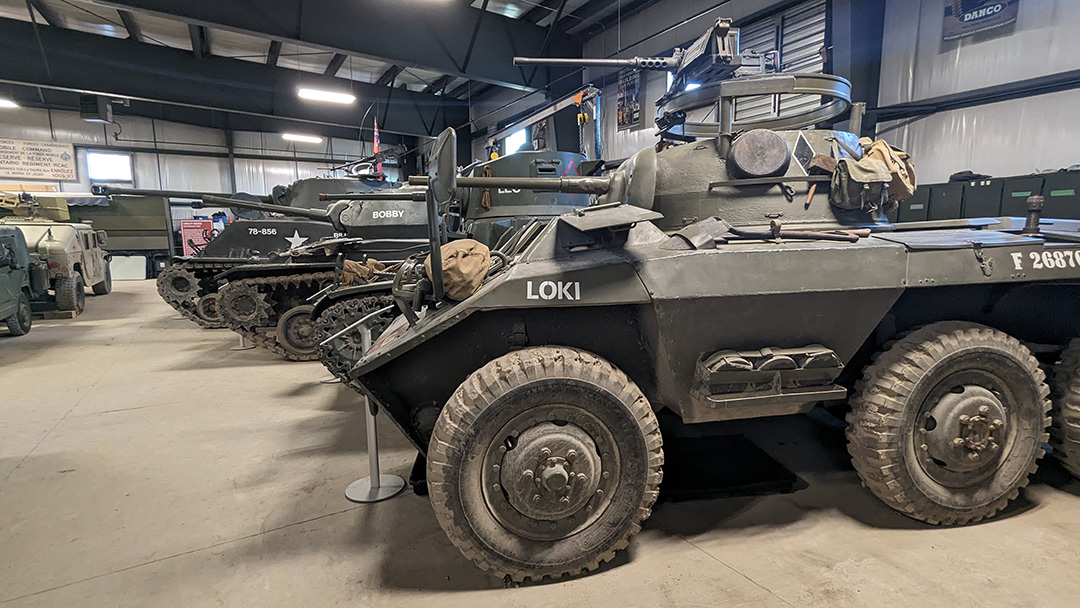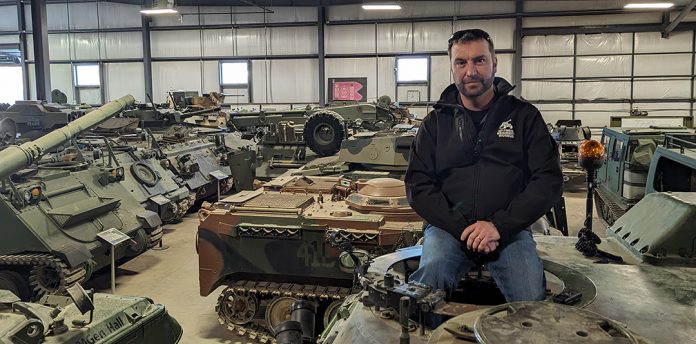The Ontario Regiment Royal Canadian Armoured Corps (RCAC) Museum, located in Oshawa, Ont., boasts the largest operational collection of military vehicles in North America.
The museum, located at 1000 Stevenson Road, showcases over 150 vehicles, each with its own story of the soldiers, the conflicts they participated in and the local industry and military ingenuity behind them.
But it only became the collection of vehicles and artifacts it is today in 1993.
Before 1993, it was the Ontario Regiment, an active military unit founded in 1866 as the 34th Battalion of Infantry. The Ontario Regiment RCAC Museum is on the lands covered by the Williams Treaties, including the traditional and treaty territories of the Mississaugas of Scugog Island, the Mississauga Peoples and the Chippewas of Georgina Island First Nation.
Jeremy Blowers, 44, the museum’s executive director, spoke with The Chronicle to explain its history and purpose.
“A museum like this plays a special role in our country and community, keeping alive the stories of the men and women who served on these vehicles,” Blowers said.
He said the machines themselves draw people in. Through their interest, the museum can share the stories of sacrifice and service to Canada and educate people about the wars and conflicts the vehicles witnessed.
“Our goal is that war and conflict should only ever exist in museums like this,” he said. “It’s unfortunate that there’s still conflict all over the world. So educating the public about it helps people better understand wars and conflict and their consequences.”
According to Blowers, the 34th Battalion of Infantry was formed to protect Canada from invasions by the Fenian Brotherhood, an organization fighting for the independence of Ireland against Britain.
“The Fenian Brotherhood had a cadre of battle-hardened and experienced soldiers from the American Civil War,” Blowers said. “They had equipment and experience. And their plan was to invade Canada and hold Canada hostage in a negotiation to free the Republic of Ireland.”
The 34th Battalion comprised nine independent militia companies in Ontario County. The battalion headquarters was in Whitby, Ont., and Oshawa had two companies. Single companies were located in Prince Albert, Greenwood, Uxbridge, Columbus and Brooklin. Together, they made up the 34 Battalion.
The museum houses artifacts from this period, such as authentic uniforms worn by the Fenian forces and the British loyalists.

(right).
Although an official declaration of war was never declared between the U.S. and Canada, five major Fenian incursions into Canada occurred between 1866 and 1870.
One such battle was the Battle of Ridgeway, which took place on May 31, 1866. This battle caused Canadian forces to retreat. A call to arms was issued, and infantry companies from Whitby, Brooklin, Oshawa and Columbus answered.
The companies from what is now Durham Region stayed at the front lines until June 18, securing victories against the last large-scale invasion on Canadian soil.
Before the 34th Battalion became a museum, infantry from the Oshawa-based regiment were called to another conflict in Canada, the Red River Resistance. Prominent Métis leader Louis Riel led an uprising against British colonial forces to assert independence and distinguish the Métis as a distinct people in Canada.
During the Red River Resistance of 1870, the 34th Battalion gave six men to fight the Métis in Western Canada. In 1885, during what Canada calls the Northwest Resistance, the 34th Battalion supplied individual soldiers to the larger force.

Brian Black is the director of self-government with the Métis Nation of Ontario (MNO) and is a Métis Veteran.
As the lead support for the Métis Veteran’s Council, Black believes the work is important. The MNO wants to work collaboratively with historical storytellers to ensure respect for all involved in these conflicts is properly shown.
“Everything we say is not to disregard history, not to tear down a statue; it’s just to put additional supplemental information up there to show that this is the history of what Canada did at the time,” he said.
He stressed that though Canada has historically called the conflict the Northwest Rebellion, it should be called the Northwest Resistance as it more accurately reflects how Métis people view the conflict.
He doesn’t want to hide history but instead wants military organizations to use a contemporary lens to display things like battle honours in a respectful way.
“[The MTO] doesn’t want any regiment, any unit to take away their battle honours, but they want them to be displayed in a respectful way,” he said. “Noted, not celebrated.”
Black understands the sensitivities of some Métis and First Nations people who believe battle honours on flags should not be removed but folded up, put in a drawer and never taken out.
Black and many on the Veterans Council advocate for a different approach.
“It shouldn’t be put away because that’s like erasing it. And you know, the old saying goes: ‘If you erase history, you’re bound to repeat it.’”
Regarding Louis Riel and the Northwest Resistance, Black says many Métis people say, “Let the stain remain,” so Canadians can remember that a Métis leader, recently recognized as the first premier of Manitoba, was executed for resisting the Canadian government.
But how did the Ontario Regiment, which was involved in these conflicts, become North America’s largest operational collection of military vehicles?
According to Blowers, in 1972, lieutenant-colonel Watt, a former commanding officer of the regiment, collected artifacts from the regiment’s past and created the first regimental museum.
The artifacts were from the 19th-century conflicts as well as the First World War and the Second World War. The artifacts were housed at Parkwood Estates.
“In 1980, with the help of another Second World War veteran, left honorary lieutenant-colonel Wilton, we could purchase seven armoured cars, The Feret Scout Cars,” he said. “That formed an honorary troop or historical vehicle section for the regiment.”
The vehicles were cared for and operated by former NCOs and officers of the Ontario Regiment for ceremonial duties.
“So, on one side, you have a collection of artifacts at Parkwood, which was the Ontario Regiment Museum in 1972, and then, in 1980, you have the historical vehicle troop. It wasn’t until 1993 that those two elements came together here at the airport to form the Ontario Regiment Museum,” Blowers said.
Currently, the Museum has 153 vehicles in its collection, including more than 33 tanks.



They have jeeps, trucks, armoured cars, armoured personnel carriers, self-propelled guns and main battle tanks.
“We have Canadian military vehicles, U.S., British, Belgian, German, Russian and Soviet Union vehicles and several vehicles that served in many nations worldwide on peacekeeping missions or in conflicts,” Blowers said.
Other than the original seven ferrets, as the collection grew, the vehicles were purchased as surplus from the Canadian Armed Forces in 1980.
He said the museum has “ballooned in size” since then. Locals donate much of the museum’s supply.
“They find an old jeep or a truck in their barn or garage that’s been sitting there for decades,” Blowers said.
The museum also acquires artifacts from retired Canadian Armed Forces vehicles and through donations from private donors, who either contribute items directly or sponsor the museum’s purchase of artifacts from around the world.
Blowers said the museum doesn’t just tell the story of Durham Region but of Canada as a whole. He said in the Second World War, Canada produced more vehicles than all the Axis Powers combined.
“We have examples here that were built in Saskatchewan, in Montreal, in Windsor and some in Oshawa at the General Motors plant,” Blowers said. “We are telling the story of the men and women who served Canada and the conflicts of Canada. But we’re also talking about this country’s technology and industrial development.”




